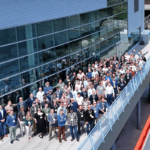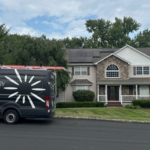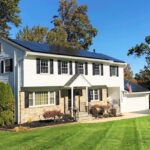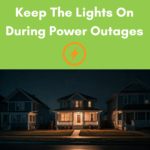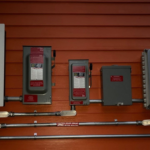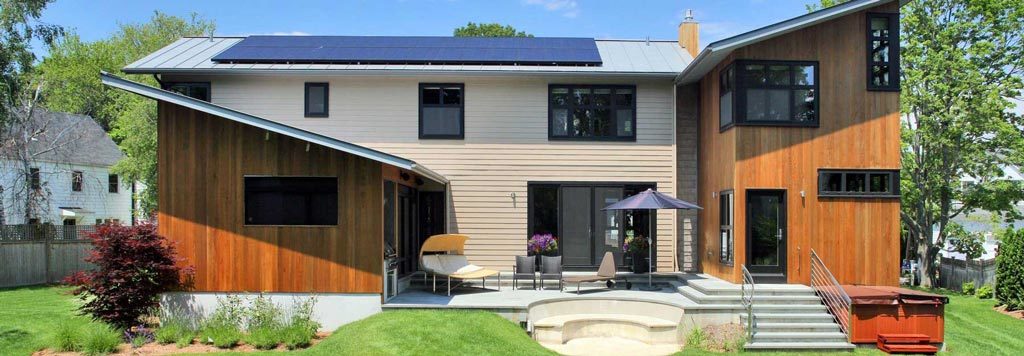
When assessing your home for a solar panel installation, you may be worried about the high amount of shadow cast on your roof by trees or surrounding buildings. Perhaps you planted a large tree on the west side of your home years ago in an attempt to block the hot late afternoon sun. Your efforts to lower your cooling bills may have backfired now that you want to add solar panels to the roof.
But don’t fret! A little shade doesn’t render your solar panels completely useless. Learn what happens to solar panels in shaded areas and tips to increase solar panel efficiency.
Efficiency of Solar Panels in Shaded Areas
Back when residential solar panels were relatively new, shade had a hugely detrimental effect on them. With this outdated technology, shade over a single cell would block the flow of electricity from the entire panel, greatly affecting its electrical output. This also had a tendency to damage the panel, since other cells worked harder to compensate for the shaded cell. This caused overheating and premature panel failure.
Fortunately, most modern panels have overcome this problem with devices called bypass diodes. Panels equipped with these devices experience fewer negative effects of solar panels in shaded areas and allow electricity to “flow around” any solar cells currently in the shade.
Thanks to this updated technology, the amount of shade eclipsing the solar panel is now directly proportional to the amount of energy production the solar panel loses. For example, if 20% of the panel is shaded at a certain time of day, the panel products 20% less energy than when it’s in full sun. This is obviously not the most ideal situation, but it’s certainly better than reducing production by almost 100%, a flaw old panels once experienced.
Tips to Deal with Solar Panels in Shaded Areas
It’s clear that the energy production – and therefore your return on investment – takes a hit if your solar panels are regularly shaded throughout the day. Fortunately, you can mitigate the problem with these considerations:
- Installation location: Install your solar panels in a place that doesn’t experience regular shading, between 10 am and 4 pm when the sun is at its most powerful. When picking a spot, consider how shading changes on your property during different seasons. If you have a large plot of land to work with, installing your panels somewhere other than the roof may be preferable if your roof is heavily shaded by nearby trees.
- Tree trimming: Consider the possibility of trimming or removing trees near your house. It may seem like a shame, but tree removal could be an important part of getting the most from your solar panels. You can always plant a smaller tree in its place or in a different spot on your property. Remember, many solar panels can last 30 years or longer, giving any new trees you plant plenty of time to grow. Place new trees strategically so they don’t cause a problem later down the road.
- Solar cell type: Weigh the pros and cons of amorphous silicon solar cells. These have proven to be better at handling shade and cloudy days than mono- and polycrystalline silicon cells, but unfortunately, they have a lower overall efficiency. With well over 200 days of sunny or partly sunny days per year in Orange County, NY, it’s logical to choose crystalline solar panels for their greater efficiency in full sun.
- Maximum Power Point Tracking: Choose an inverter with Maximum Power Point Tracking (MPPT) capability. This technology, which comes standard on most new inverters, tracks the output of each panel and averages them out. This way, even if one panel’s output is affected by the shade, its capacity isn’t fully lost simply because it dips below the required output threshold. You can also ask your solar installer about inverters with module-level MPPT. These are a step up, able to more intelligently average outputs from individual panels than a central inverter.
How Efficiency Compares Between Top Solar Panel Brands
Aside from considering solar panels in shaded areas, if you select more efficient solar panels to begin with, you’ll enjoy greater energy output and a better return on your investment. Here’s a look at some of the top solar panel brands of the day and their efficiency ratings:
- SunPower: This brand holds the record for the most efficient solar panels in the world at 21.5%. Plus, in a study to see how SunPower solar panels performed in real-world shading conditions, the panels only lost 7.8% to 13.8% efficiency, compared to more than a 28% production loss seen in other panels. Both sets of panels in the test had the MPPT scan feature operating. In another test, SunPower panels lost up to 11.3% efficiency while other panels lost more than 50% of electricity production when faced with shading from leaves and no MPPT scanning.
- Panasonic: A big player in the solar world, Panasonic manufacturers some of the most efficient monocrystalline solar panels today at about 19.4% efficient, depending on the model you choose. An improvement on this near-industry best comes out in March 2016. This latest release will offer 19.7% efficiency.
- Mage Solar: Another player in the monocrystalline field is Mage Solar, manufacturer of panels up to 17.3% efficient.
- SolarWorld: Special features such as reduced exterior light reflection and increased internal light trapping help panels from this brand achieve a fairly impressive 16.4% efficiency.
- Kyocera Solar: If you’re set on choosing polycrystalline cells instead of the more efficient monocrystalline cells, Kyocera Solar could be a good pick. This company manufacturers the highest average output polycrystalline module at just over 16% efficient.
- SharpUSA: While acknowledged as a reliable brand, SharpUSA’s solar panels lag behind the very best brands in terms of efficiency. Each of the company’s 235-wall modules is 14.4% efficient.
If you know an investment is going to last 30 years or longer, would you be most concerned about getting the cheapest upfront cost, or a product that will perform better over the long term? It’s clear that choosing SunPower solar panels and installing them in the least shaded area possible is the best way to see a lucrative return on your investment. Discuss your concerns about solar panels in shaded areas with a New York solar panel installer today to get the ball rolling on your installation.
